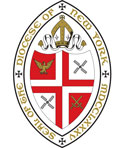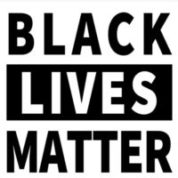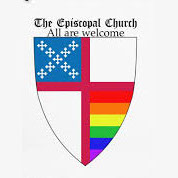Podcast: Play in new window | Download (Duration: 14:39 — 12.7MB)
Subscribe: Apple Podcasts | RSS
Maybe you’ve heard the phrase, “Jesus died for your sins,” once or twice before. Maybe you’ve been the one saying those words, to a child or a Sunday school student. Maybe these words have brought you great comfort. Maybe they are the source of continued struggle and confusion.
Whatever your experience or relationship with the phrase “Jesus died for your sins,” the truth is, when it comes to who Jesus was and what God’s purpose for him was, this often becomes the boiler plate answer. What did Jesus do? He died for your sins. As a child, I remember a sketch in my children’s bible, of a child holding a stuffed animal, kneeling at the foot of a hill, gazing up at the top of the hill which rose off in the distance, and at the top of that hill were three crosses, and the caption simply read, “For Me.” Though this was meant to make the idea of Jesus dying for my sins relatable for a child, I think it sums up, pretty well, how deeply personal we mean it to be.
John’s gospel goes to great lengths to talk about Jesus and exactly who he is, right from the start. We have a prologue telling us about the Word from the beginning; then John the Baptist emerges on the scene, testifying about the one on whom the voice of the Lord rested and the Spirit of God descended. But if we listen closely to this portion of John’s gospel, it tells us two important things about Jesus that are easy to miss if we don’t know how to look for them.
The first is that John’s gospel actually paints a very different picture of this Lamb of God than the person who died for your many miserable sins. He says, “Here is the Lamb of God who takes away the sin of the world!” If you blink, you missed it. It’s small but significant: the word “sin” is singular here. John the Baptist isn’t pointing to the person who’s going to wash away all the dirty little things you’ve done; he’s pointing to the walking embodiment of God’s purpose, which is to restore us to right relationship with each other, with ourselves, and with God. To take away the parts of us that believe the lie that some kinds of people deserve better things in life than others simply by virtue of who and what they are. To heal the wounds we inflict upon each other, to tear down the walls that separate us, to repair the diseased systems that favor some and oppress others, to restore our collective brokenness.
In April of 1963, a group of 8 Christian and Jewish clergymen in Birmingham, AL, had reached their wits’ end. Blacks in Birmingham were frustrated with repeated failed attempts to secure systemic changes that would allow them to live with the dignity and the freedom they had continually been denied, so MLK had traveled there to lead them in non-violent demonstrations. These religious leaders thought the demonstrations were causing just too much darn friction in their town. Unlike Dr. King and the Black citizens of Birmingham, they were encouraged by the progress that was being made to confront racial problems in Alabama, and they claimed that King’s nonviolent demonstrations were inciting hatred and violence by virtue of the subject matter of their protests. And so they penned a cease-and-desist letter to Dr. King. In this letter, which did not once invoke the name of God, or rely on Holy Scripture, to underscore their position, they said: “We recognize the natural impatience of people who feel that their hopes are slow in being realized. But we are convinced that these demonstrations are unwise and untimely… We do not believe that these days of new hope are days when extreme measures are justified in Birmingham.”
These men of God wanted justice, but not yet. Not at the expense of anyone’s comfort. Not at the cost of their own power.
Among the signatories were 2 Episcopal bishops.
MLK replied to them 4 days later in his now-famous “Letter from Birmingham Jail.” In his letter, he said: “I must confess that over the past few years I have been gravely disappointed with the white moderate. I have almost reached the regrettable conclusion that the Negro’s great stumbling block in his stride toward freedom is not the White Citizen’s Counciler or the Ku Klux Klanner, but the white moderate, who is more devoted to ‘order’ than to justice; who prefers a negative peace which is the absence of tension to a positive peace which is the presence of justice; who constantly says: ‘I agree with you in the goal you seek, but I cannot agree with your methods of direct action’; who paternalistically believes he can set the timetable for another man’s freedom; who lives by a mythical concept of time and who constantly advises the Negro to wait for a ‘more convenient season.’”
… “We must come to see that human progress never rolls in on wheels of inevitability. It comes through the tireless efforts and persistent work of men willing to be co-workers with God.”
Behold the Lamb of God, who takes away the sin of the world.
Our collective brokenness – the ways that human beings have dared to play God and continued to believe that some kinds of people are more worthy, or whole, or good, or smart, or deserving, than others – is the sin of the world. This is what Dr. King understood so well, it is why he believed so fervently in trying to heal systems, not people, because problems are not found in individual people but in systems of dominance and oppression that they create – and this is the first thing we miss if we listen too quickly or superficially to John’s gospel.
But there’s another thing we can easily miss, too.
There is a version of the Bible called the “red letter bible” where all the words of Jesus are in red. When you get to John’s gospel, you might be surprised at how much black ink you read at the outset. John’s gospel says so much ABOUT Jesus – from the prologue to the testimony of John the Baptist to the calling of the first disciples – that we almost don’t realize that Jesus is a pretty silent character for a while. When Jesus does finally emerge on the scene, it’s not his voice, but John’s, that we hear, pointing everyone to the lamb of God. When the first disciples decide to follow Jesus, it’s not because Jesus beckons them, but because John points them to Jesus. And so we almost miss the fact that the first words out of Jesus’ mouth – the first red letters that appear – are “What are you looking for?”
What are you looking for?
It’s a question he asks the disciples, but it’s the question that the gospel poses to us, too. When we seek to follow Jesus, what are we looking for?
And I have to wonder what those Episcopal bishops back in 1963 would say if Jesus turned to them and asked, “What are you looking for?”
Indeed, what were they looking for as people who claimed to follow Jesus? Were they looking for God’s kingdom on earth, where the wolf would lie down with the lamb? Were they looking for the new creation in Christ where St. Paul tells us there is neither slave nor free, but all are one in Christ Jesus? Or were they looking for comfort, power, and prestige? Were they looking out for their own interests, serving the golden calf of complacency in the name of keeping the peace? What were they looking for as they tried to follow Jesus?
And what about us, today? What about you? When you are compelled to follow Jesus, what are you looking for?
We don’t have to wonder too much about what MLK would have said. He answered it in his letter from Birmingham Jail. In addressing their concerns that his actions were too extreme, he said:
“I gradually gained a bit of satisfaction from being considered an extremist. Was not Jesus an extremist for love – “Love your enemies, bless them that persecute you”… So the question is not whether we will be extremist but what kind of extremist we will be … In that dramatic scene on Calvary’s hill, three men were crucified. We must not forget that all three were crucified for the same crime – the crime of extremism. Two were extremists for immorality, and thusly fell below their environment. The other, Jesus Christ, was an extremist for love, truth, and goodness, and thereby rose above his environment. So, after all, maybe the South, the nation and the world are in dire need of creative extremists.”
I think this is what we need to remember today: Jesus, the Lamb of God who takes away the sin of the world, is an extremist for love. When we start following Jesus, and he turns to us and asks, “What are you looking for?” I think he’s wondering if we see with his eyes: to see the sin of the world that he sees – the systems built by racism and bigotry, built to thrive at the expense and suffering of others. To see the collective brokenness that Jesus has come to take away. To see a Savior who is an extremist for love, truth, and goodness, who showed us the risks and the joy that not only a death but a life lived for God’s loving purpose can contain. And to answer when he asks, “What are you looking for?” – to answer, “You, Jesus. I’m looking for You.”




